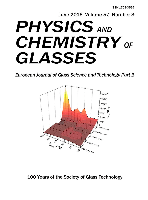
Physics and Chemistry of Glasses-European Journal of Glass Science and Technology Part B
Scope & Guideline
Pioneering New Frontiers in Glass Science and Technology
Introduction
Aims and Scopes
- Structural Analysis of Glass Materials:
The journal emphasizes the structural properties of glass, including studies on local structures in alkali-borate glasses, neutron diffraction investigations, and molecular dynamics simulations to elucidate the atomic arrangement in different glass types. - Thermal and Mechanical Properties:
Research on the thermal stability, mechanical properties, and fatigue behavior of glass materials, such as sodium borosilicate glasses and glass-ceramics, is a significant focus area, contributing to the development of more resilient glass products. - Optical Properties and Applications:
The journal covers the optical properties of glass, including advancements in optical metamaterials and their applications in energy harvesting and telecommunications, showcasing the potential uses of glass in innovative technologies. - Innovative Glass Compositions:
The exploration of new glass compositions, such as lead oxide doped zinc tellurite glass and carbon nanotube-glass composites, is highlighted, indicating a trend towards developing specialized glasses for specific applications. - Environmental and Functional Glasses:
Research on glasses designed for environmental applications, such as carbon dioxide sifting glasses and phosphate glasses with controlled release properties, reflects the journal's commitment to addressing contemporary challenges through glass technology.
Trending and Emerging
- Nanocomposites and Advanced Materials:
Recent publications highlight the development and study of glass composites, such as carbon nanotube-glass composites, indicating a growing interest in enhancing glass properties through nanotechnology. - Sustainability and Environmental Applications:
There is an increasing trend towards researching environmentally friendly glasses, such as those designed for carbon capture and controlled release applications, reflecting a broader commitment to sustainability. - Innovations in Optical and Photonic Glasses:
The emergence of studies on optical metamaterials and advanced optical glasses suggests a focus on the integration of glass in cutting-edge photonic applications, enhancing its role in communication technologies. - Computational and Simulation Studies:
An uptick in the use of molecular dynamics simulations and computational methods to understand glass structure and properties indicates a trend towards utilizing advanced computational techniques in glass research. - Functional Glasses for Energy Applications:
Research on glasses that serve specific energy-related functions, such as transparent light-energy harvesters and thermoelectric glass systems, is becoming increasingly prevalent, showcasing the material's versatility in energy technologies.
Declining or Waning
- Traditional Glass Manufacturing Processes:
There seems to be a reduced focus on conventional glass manufacturing techniques, as newer methods and materials gain traction in the field. - Basic Theoretical Studies:
The journal has published fewer papers on fundamental theoretical studies of glass, suggesting a shift towards more application-oriented research and experimental approaches. - Historical Studies of Glass:
Topics related to the historical analysis of glass materials and their properties, while still relevant, appear to be less frequently addressed, possibly due to a growing emphasis on contemporary applications. - Generalized Glass Properties:
Research that broadly discusses the properties of glass without specific applications or innovative approaches is becoming less common, as the journal prioritizes targeted studies that contribute to technological advancements.
Similar Journals
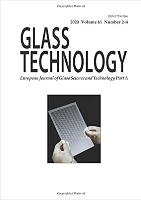
Glass Technology-European Journal of Glass Science and Technology Part A
Innovating the Future of Glass Research and ApplicationsGlass Technology - European Journal of Glass Science and Technology Part A, published by the SOC GLASS TECHNOLOGY in the United Kingdom, is an esteemed journal dedicated to advancing the field of glass science and technology. With a focus on ceramics, composites, and materials chemistry, the journal plays a pivotal role in disseminating significant research findings and innovations in glass technology. Despite its current positioning in the lower quartiles (Q4) of the 2023 category rankings, this journal serves as a valuable platform for emerging research and novel technologies within its domain. Researchers, professionals, and students are encouraged to explore the journal's contributions from 2006 through to 2024, which include peer-reviewed articles, reviews, and case studies essential for anyone involved in the glass industry or related fields. Though it operates under a subscription model, it maintains rigorous academic standards, ensuring that each publication meets the highest criteria for quality and relevance.

JOURNAL OF GLASS STUDIES
Unveiling the Cultural Significance of Glass Artistry.JOURNAL OF GLASS STUDIES, published by the esteemed Corning Museum of Glass, stands as a pivotal resource in the realm of visual arts, particularly focusing on the expansive field of glass studies. With an ISSN of 0075-4250, this journal has been a beacon for scholars since its inception in 1969, offering critical insights and fostering scholarly dialogues that enhance our understanding of glass as both an art form and a material. The journal is currently ranked in the Q2 category of Visual Arts and Performing Arts for 2023 and positions itself 72nd percentile within Scopus rankings, reflecting its influence and reputation among academics and professionals alike. Although the journal is not open access, it provides valuable contributions to the field with specific focus on historical context, technological advancements, and aesthetic compositions related to glass. As a vital platform for research, the JOURNAL OF GLASS STUDIES invites researchers, students, and art professionals to explore its manuscripts, which illuminate the cultural significance and innovation in glass artistry.
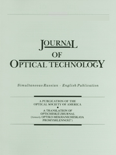
JOURNAL OF OPTICAL TECHNOLOGY
Advancing Research in Optical TechnologyJOURNAL OF OPTICAL TECHNOLOGY, published by the Optica Publishing Group, serves as a vital resource for researchers and professionals in the fields of optical technology and related disciplines. Established with a commitment to advancing knowledge, this journal spans a broad spectrum of topics, including applied mathematics, atomic and molecular physics, and various engineering disciplines, with a converged publication period from 1995 to 2024. Although it currently holds a Q4 ranking across multiple categories in 2023, it is an important platform for innovative research ideas in a rapidly evolving field. The absence of Open Access may guide readers to explore alternative access options through institutional subscriptions. The journal’s ISSN is 1070-9762 and its E-ISSN is 1091-0786, ensuring accessibility for a global audience. As a publication aimed at fostering scholarly communication, it invites contributions that highlight emerging trends and novel developments in optical technology, catering to a multifaceted audience of researchers, professionals, and students.
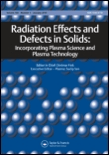
Radiation Effects and Defects in Solids
Advancing Knowledge in Radiation Effects and DefectsRadiation Effects and Defects in Solids is a prestigious academic journal published by TAYLOR & FRANCIS LTD that has been at the forefront of research related to the impacts of radiation on various solid materials since its inception in 1989. With an ISSN of 1042-0150 and an E-ISSN of 1029-4953, this journal serves as an essential resource for researchers and professionals in the fields of Condensed Matter Physics, Materials Science, and Nuclear and High Energy Physics. Despite its current categorization in the Q4 quartile across these disciplines, Radiation Effects and Defects in Solids remains critical for advancing knowledge of material responses to radiation, which is vital for applications in nuclear energy, space exploration, and radiation therapy. The journal publishes original research articles, reviews, and letters that provide insights into material properties, radiation dosimetry, and defect structures, fostering collaboration and innovation within the scientific community. As the field evolves, Radiation Effects and Defects in Solids continues to play a significant role in disseminating valuable research findings and keeping pace with emerging trends in materials science and radiation physics.
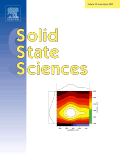
SOLID STATE SCIENCES
Advancing the Frontiers of Materials ResearchSOLID STATE SCIENCES is an influential academic journal published by Elsevier, focusing on advancements in the fields of chemistry, condensed matter physics, and materials science. With an ISSN of 1293-2558 and an E-ISSN of 1873-3085, this journal has been at the forefront of disseminating innovative research since its inception in 1999 and is projected to continue until 2024. Positioned in the prestigious Q2 category in multiple disciplines for 2023, SOLID STATE SCIENCES ranks #87 in condensed matter physics, #101 in general chemistry, and #124 in general materials science within Scopus. Researchers and professionals in these fields will find this journal indispensable, offering open access options that enhance global visibility and accessibility of cutting-edge research, fostering collaboration and innovation. With its commitment to showcasing substantial contributions and novel methodologies, SOLID STATE SCIENCES plays a vital role in shaping the future of materials research.

JOURNAL OF ELECTRONIC MATERIALS
Elevating Knowledge in Condensed Matter Physics and BeyondWelcome to the Journal of Electronic Materials, a premier publication in the field of materials science. Published by Springer, this esteemed journal has been a beacon for groundbreaking research in electronic, optical, and magnetic materials since its inception in 1972. As an established resource, it boasts a commendable impact factor and categorically ranks in the second quartile (Q2) in key areas such as Condensed Matter Physics and Electrical and Electronic Engineering, as well as holding a respectable third quartile ranking in fields related to Electronic, Optical, and Magnetic Materials and Materials Chemistry. Researchers, professionals, and students can access a wealth of knowledge as we publish original articles, reviews, and cutting-edge research that push the boundaries of science and technology in these critical fields. Stay informed and engaged as we explore advancements that shape the future of electronic materials.
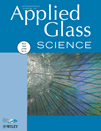
International Journal of Applied Glass Science
Exploring the Boundaries of Material ApplicationsThe International Journal of Applied Glass Science, published by Wiley Periodicals, Inc, is a leading scholarly journal in the field of materials science, particularly focusing on the applications and innovations in glass science. Since its inception in 2010, the journal has served as a vital platform for disseminating high-quality research and advancing knowledge within the community, maintaining a respectable Q2 ranking in the Materials Science (Miscellaneous) category as of 2023. With an ISSN of 2041-1286 and E-ISSN of 2041-1294, it continues to attract a diverse array of manuscripts that explore fundamental and applied aspects of glass technology and its countless applications. Scholars and professionals benefit from the journal’s commitment to transparency and accessibility, even in the absence of an open access model, thereby reinforcing its relevance in an evolving academic landscape. The journal is positioned to be an influential resource for researchers, professionals, and students keen to stay at the forefront of glass science developments.

REFRACTORIES AND INDUSTRIAL CERAMICS
Unveiling the Future of Industrial CeramicsREFRACTORIES AND INDUSTRIAL CERAMICS is a prestigious journal published by Springer, dedicated to the field of ceramics and composite materials. With an ISSN of 1083-4877 and an E-ISSN of 1573-9139, this journal plays a pivotal role in fostering advances in the development, formulation, and application of refractories and industrial ceramics. The journal has been actively publishing since 1996 and is recognized for its contribution to the academic discourse in the ceramics community. Although it currently holds a Q4 ranking in both Ceramics and Composites and Materials Chemistry categories, it serves as an important platform for emerging research trends and innovations, making it essential reading for researchers, professionals, and students engaged in material science. While access is not open, the journal ensures that high-quality research reaches its audience, reflects the evolving landscape of the ceramics industry, and encourages interdisciplinary collaboration.
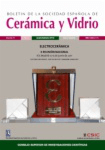
BOLETIN DE LA SOCIEDAD ESPANOLA DE CERAMICA Y VIDRIO
Pioneering Discoveries in Ceramic and Composite TechnologiesBOLETIN DE LA SOCIEDAD ESPANOLA DE CERAMICA Y VIDRIO, published by Elsevier, is a premier open-access journal dedicated to advancing research in the fields of Ceramics and Composites, Industrial and Manufacturing Engineering, and Mechanics of Materials. With an impressive impact factor and a strong ranking within its categories—Q2 in 2023 for multiple engineering domains—it serves as a vital resource for academics, industry professionals, and students alike. The journal has embraced an open-access model since 2015, providing widespread accessibility to the latest findings and innovations in ceramic and glass sciences, thus encouraging collaboration and knowledge sharing within the global research community. Published quarterly, and with a focus on interdisciplinary applications, the BOLETIN DE LA SOCIEDAD ESPANOLA DE CERAMICA Y VIDRIO is not only influential in shaping research agendas but also essential for anyone engaged in the evolving landscape of materials science.
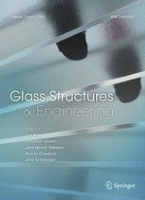
Glass Structures & Engineering
Exploring the Boundaries of Glass Engineering.Glass Structures & Engineering, published by SPRINGER INT PUBL AG, stands as a significant platform in the field of architectural and structural engineering, with a strong focus on advancements and innovative applications of glass in construction. With its ISSN 2363-5142 and E-ISSN 2363-5150, this prestigious journal holds a commendable position, evidenced by its Q1 classification in Architecture and Q2 ranking in both Building and Construction and Civil and Structural Engineering as of 2023. Since its inception in 2016, Glass Structures & Engineering has aimed to disseminate cutting-edge research findings, theoretical approaches, and case studies that explore the multifaceted uses of glass in modern infrastructure. Researchers, professionals, and students alike will find this journal an invaluable resource for the latest trends and methodologies in the evolving landscape of architectural design and structural integrity. Although it does not offer Open Access options, the journal remains an indispensable source for quality scholarly content in Switzerland and beyond.